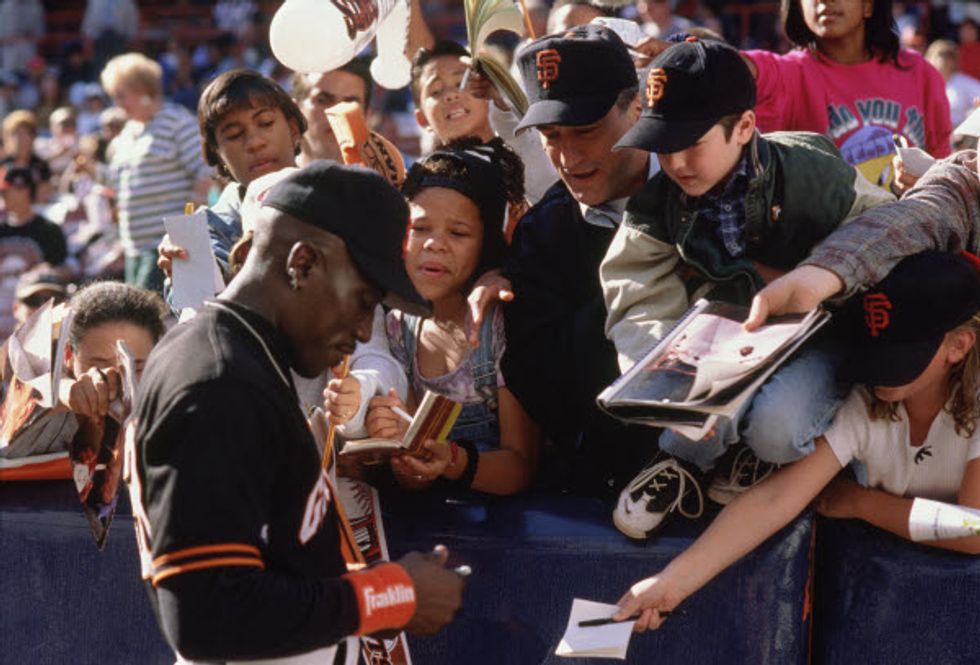Welcome to "On Location," a micro-feature taking you to little-known cinematic locations of SF and taking a look at the films shot in the city by the bay over the years.
I'd like to imagine that at some point Robert De Niro is going to come out and acknowledge the obvious truth that he's a total ham. Even more so than frequent partner-in-crime Al Pacino, De Niro's career is split between being incredibly self-serious and incredulously mock-serious in roles that would make a less experienced actor lose their cool after each ludicrous line. To wit: for every Taxi Driver, there's a Hi, Mom; for every Ronin, a Flawless… don't even get me started on Analyze That.
Falling far, far on the ludicrous end of the spectrum is Tony's Scott's abysmal The Fan, a star-studded incursion into the world of professional sports, stalker fans, and (presumably) the SF Giants, which stars Mr. De Niro as a pathetic knife salesman-turned-psychotic sportsfan. The plot, like the film's low-attention-span lensing, could have been the work of a teenager: De Niro is an obsessive fan, Wesley Snipes is a big hitter just signed to the Giants for a 40 million-dollar contract. Before you can say "Cutco," De Niro has channeled his suffering psyche into crime after crime and is holding Snipes' son ransom in exchange for a home run.
Instrumental in the creation of the Tribeca Film Festival, by his own admission Mr. De Niro is a New Yauka at heart, and The Fan accordingly treats the city by the bay like a flyover state. Despite taking place entirely in San Francisco and being officially supported by the SF Giants (who it appears won some sort of bidding war as the script was originally set in Boston, with the Boston Red Sox), the film has precious few scenes of the city, nearly all of them second-unit shots from outside cars in the most obvious places (Golden Gate Bridge, the TransAmerica pyramid, a suspiciously empty morning moment on the 101). The film's main sports sequences DO appear in Candlestick Park, but even those have their issues. The IMDB listing of the film's "goofs" is a testament to the level of attention paid during the making of the film overall (read: none), from editing jumps between Candlestick Park and Coors Field in Colorado down to mistakes as simple as De Niro having different types of Giants hats throughout the film. While we're on the subject of hats, De Niro's choice of the orange-and-black fitted indicates that maybe he isn't as local as he claims, lest he be wearing the full black-on-black preferred by Giants die-hards. Maybe they weren't made back then?
For his part, despite receiving coaching from no less a personage than Cal Ripken, Jr., Snipes looks no more like a baseball player than he did a basketball player in White Men Can't Jump. Just to prove his all-round sports incompetence, at one point they drag him out to the Presidio Golf Course to clunk exactly one ball toward the distant horizon while his good buddy and agent, played by John Leguizamo, yacks away. As the film wears on, it becomes apparent that the only one on set who knows what to do with a baseball is former Giant Mike Sadek, who acted as De Niro's stand-in for some of the pitching scenes. If you've seen the film and wondered "What the heck are they doing?!" you're not alone, even the Giants administration, who had given the go-ahead for filming initially, held it back from release, demanding a re-edit of the original footage. Even given my preference for baaaad movies and San Francisco scenes, I'd take a trip to the ballgame any day.





















